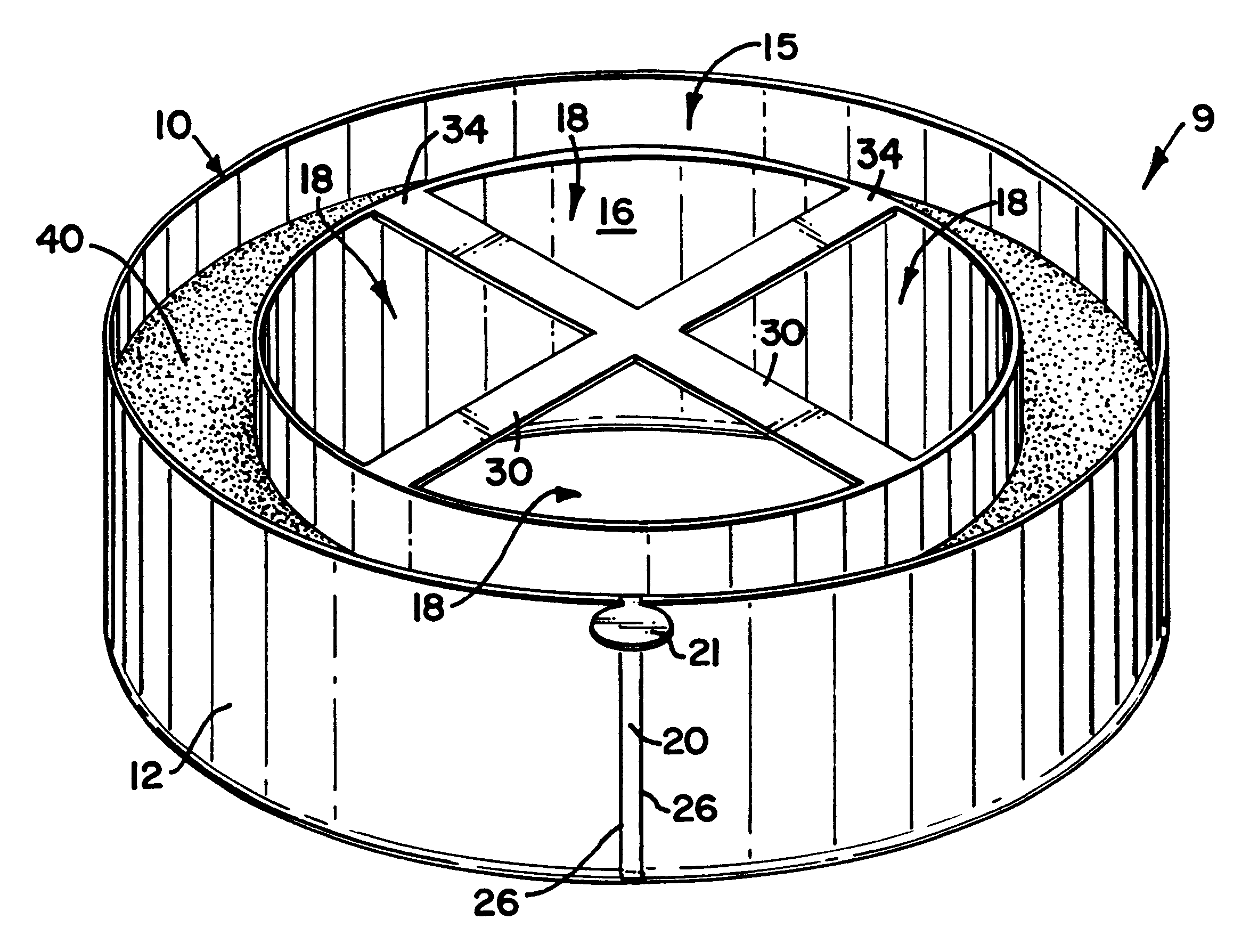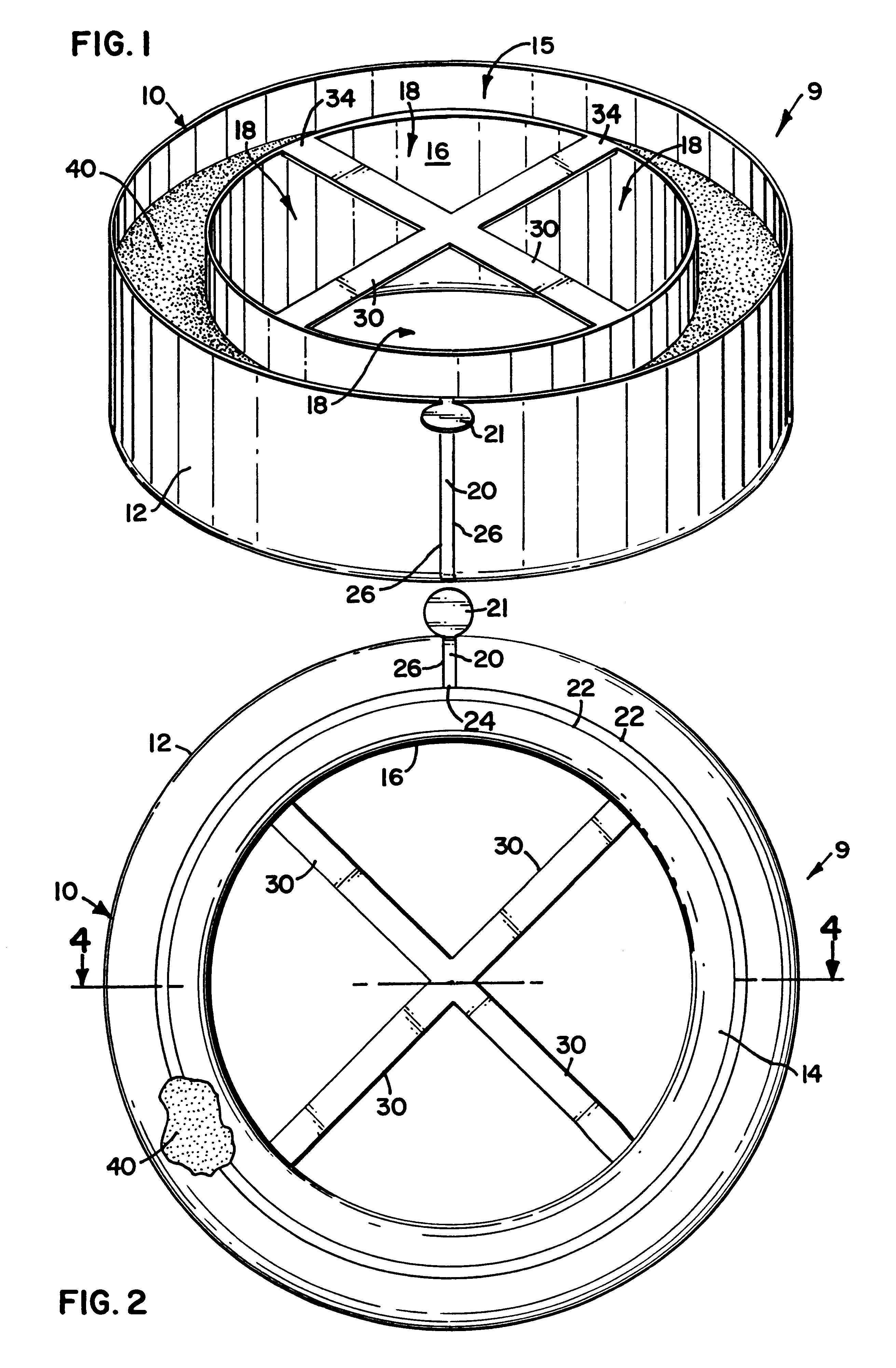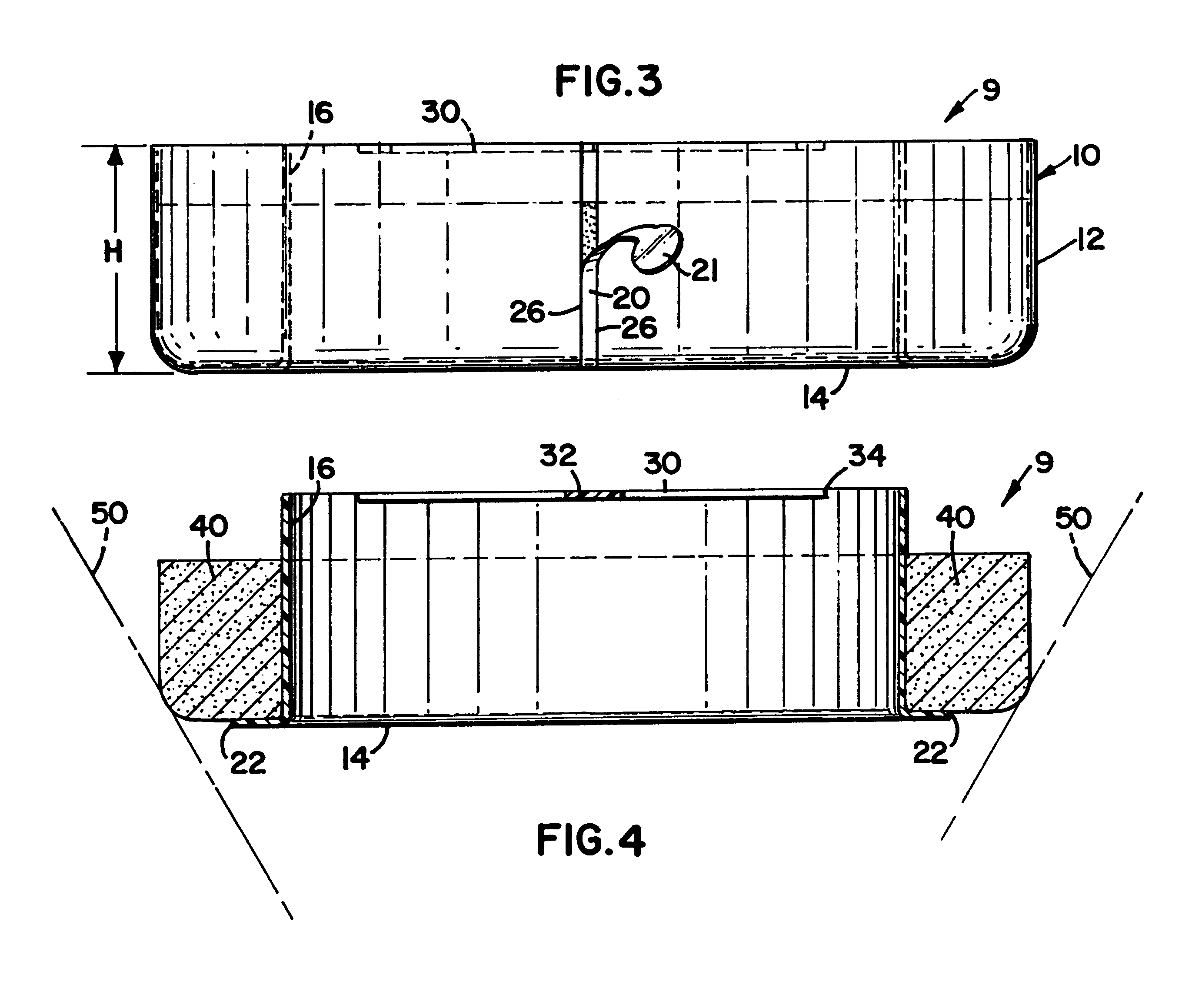Drain treatment product and method of use
a technology of product and treatment method, applied in the direction of detergent compounding agent, liquid displacement, separation process, etc., can solve the problems of preventing the formation and affecting the development of viable tear strips
- Summary
- Abstract
- Description
- Claims
- Application Information
AI Technical Summary
Problems solved by technology
Method used
Image
Examples
example 18
To mix the chemical sanitizer (40) of the present invention, sodium 1-octane sulfonate (40% w / w) was charged into a mixing tank to the quantity of 19 wt-% of the entire mix. The tank was then heated with the appropriate agitation. Decanoic acid was then added to the mix at a weight of 10 wt-% of the mix followed by the addition of 60 wt-% powdered sodium bisulfate and 11 wt-% of powdered sodium 1-octane sulfonate to the mix with adequate agitation. The mixture was then heated and agitated until the constituents formed a homogeneous composition. The formulation was then decanted into individual housings.
Using the AOAC Official Method of Analysis for Germicidal and Detergent Sanitizing Action of Disinfectants, commonly known as the A.O.A.C. use dilution test, a bacterial analysis of Example 18 was completed. The analysis showed that given an initial concentration of 6.9.times.10.sup.7 CFU / ml of E. coli, test solution of 50, 75, and 100 p.p.m. of decanoic acid equivalence in solution p...
example 19
Charge 34.5% phosphoric acid (85.0 w / w) into the mixing tank, heat and agitate at the appropriate rate. Slowly charge 47.8 wt-% urea into the mix, with continued agitation and heating while not exceeding 170.degree. C. Charge 10.0 wt-% of polyoxypropylene-polyoxyethylene (m.w. 5600) and 0.20 wt-% of coconut fatty acid (m.w. 198) into the mix and cool the formulation to 125.degree. C. A premix which is 7.50 wt-% of the total formulation (the premix comprises 4.43 wt-% I.sub.2, 1.95 wt-% NaI and 1.12 wt-% of deionized water of the total formulation) was then charged into the mix. The mixture was then agitated at 125.degree. C. until all the constituents were melted or dissolved. The complete formulation was then decanted into individual housings.
A bacterial analysis of the resulting product in accordance with AOAC Testing Protocol for Available Chlorine Germicidal Equivalent Concentration (Official Final Action, A.O.A.C. Methods of Analysis, 14th edition, 1984) was then run to determi...
example 20
To mix the chemical sanitizer (40) of the present invention, the hardening constituent in the form of 45 wt-% of stearic monoethanolamide is charged into the tank and the tank is heated with appropriate agitation. The sanitizing agent in the form of 35 wt-% of dodecyl benzene sulfonic acid sodium salt is then charged into a mixing tank with continued heating and appropriate agitation. Finally, 20 wt-% of powdered sodium bisulfate is added to the formulation. The mixture is then heated and agitated until all the constituents are melted or dissolved. The then completed chemical sanitizing agent is then decanted into individual housings.
PUM
| Property | Measurement | Unit |
|---|---|---|
| thickness | aaaaa | aaaaa |
| thickness | aaaaa | aaaaa |
| thickness | aaaaa | aaaaa |
Abstract
Description
Claims
Application Information
 Login to View More
Login to View More - R&D
- Intellectual Property
- Life Sciences
- Materials
- Tech Scout
- Unparalleled Data Quality
- Higher Quality Content
- 60% Fewer Hallucinations
Browse by: Latest US Patents, China's latest patents, Technical Efficacy Thesaurus, Application Domain, Technology Topic, Popular Technical Reports.
© 2025 PatSnap. All rights reserved.Legal|Privacy policy|Modern Slavery Act Transparency Statement|Sitemap|About US| Contact US: help@patsnap.com



